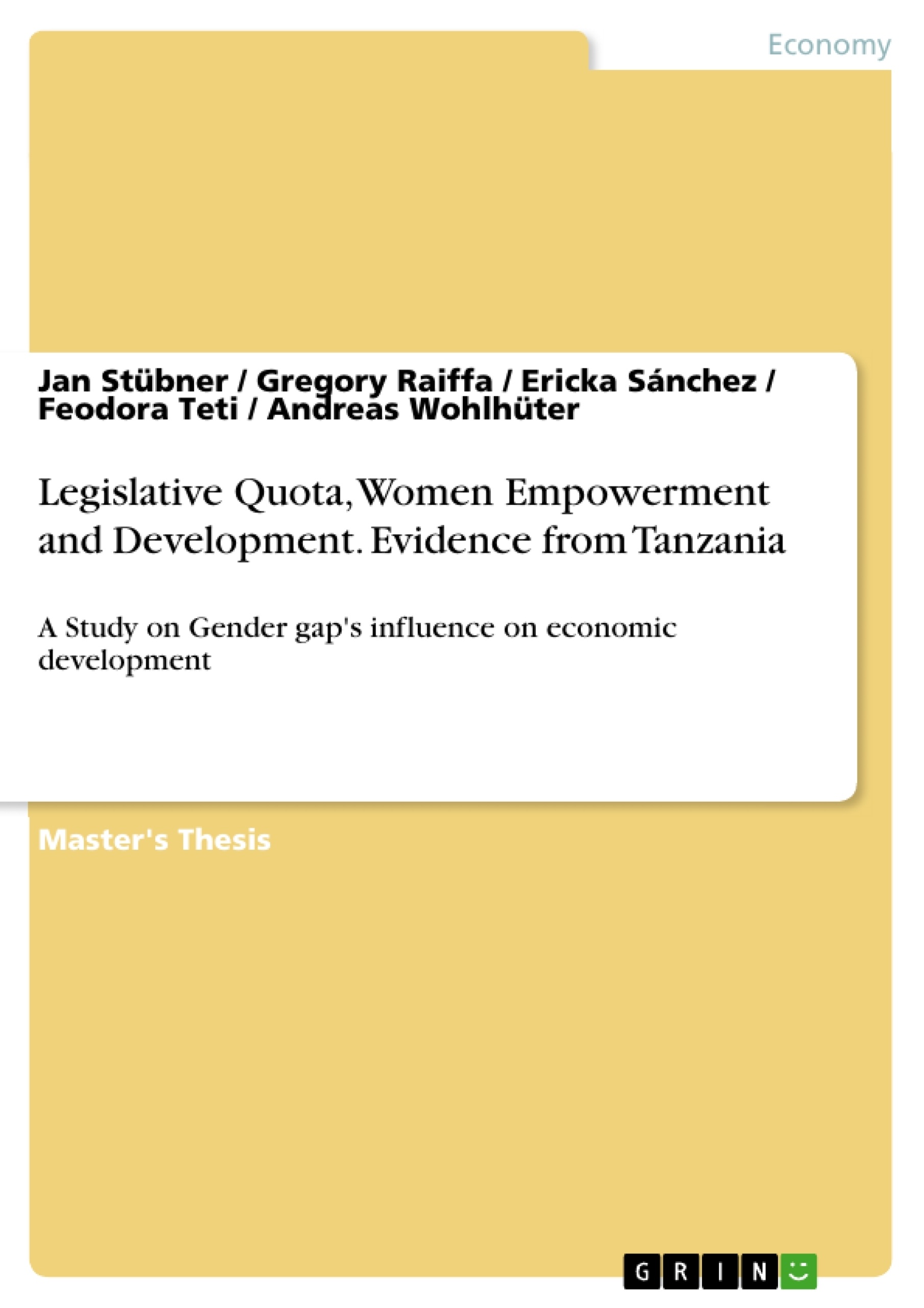This paper analyzes whether the legislative women’s quota implemented in Tanzania has helped to reduce the existing gender gap in that country. We focus on a set of development indicators indicated by the literature and an analysis of female political activity. We exploit the variation in the number of female representatives across the 131 districts of Tanzania, employing a Difference and Differences approach including fixed effects and controlling for a number of socioeconomic variables. Our analysis indicates that the legislative women’s quota in Tanzania has led to significant reductions in the gender gap and improvements for women. The quota has effectively increased political participation in accordance with its goals, and the level of female representation continues to rise. We find evidence that the quota has reduced the gender gap in education for certain age groups, and we find indications of small improvements to female empowerment. In accordance with previous findings in other countries, we find that the increased female representation has led to substantial investments in water infrastructure that has greatly increased the number of people with access to clean water. While we do not find significant health impacts, this may be due to limitations in our dataset.
Inhaltsverzeichnis (Table of Contents)
- Introduction
- Literature Review
- The Women Quota in Tanzania
- Testable Implications
- Empirical Strategy
- Dataset
- Analysis
- Policy Evaluation
Zielsetzung und Themenschwerpunkte (Objectives and Key Themes)
This paper investigates the impact of the legislative women's quota implemented in Tanzania on gender equality and development. The study examines a range of development indicators and female political activity, seeking to determine whether the quota has effectively reduced the existing gender gap in Tanzania.
- The impact of the legislative women's quota on gender equality and development indicators
- The effects of the quota on female political participation and representation
- The role of women in policymaking and its impact on social norms and cultural attitudes
- The relationship between female representation and public spending priorities
- The effectiveness of quotas in promoting gender equality and women's empowerment
Zusammenfassung der Kapitel (Chapter Summaries)
- Introduction: The introduction outlines the importance of gender equality and the empowerment of women as a key UN Millennium Development Goal. It highlights the progress made in closing gender gaps in education and health but acknowledges the persistent disparities in economic participation and political empowerment, particularly in developing countries like Tanzania. The introduction also emphasizes the need to evaluate the impact of policies like legislative women's quotas in addressing gender inequality.
- Literature Review: This chapter explores the existing research on the relationship between gender inequality and economic growth and development. It examines the arguments for the importance of women's education and labor market participation, highlighting their impact on human capital formation and economic progress. The chapter also reviews the literature on the influence of female political participation in reducing gender gaps in various areas, including spending priorities, social norms, and cultural attitudes.
- The Women Quota in Tanzania: This chapter provides a detailed overview of the special seat system for women in Tanzania, outlining its implementation and its effects on female political participation. It discusses the history of the quota, its evolution, and its significance in the context of Tanzania's patriarchal society. The chapter also examines the role of women in advocating for policy changes that address women's concerns, such as maternity leave, sexual offenses, and land reform.
- Testable Implications: This chapter identifies specific testable implications of the legislative women's quota based on the literature review and the context of Tanzania. It outlines the potential effects of the quota on various development indicators, including education, health, infrastructure, and female empowerment.
- Empirical Strategy: This chapter details the research design and methodology used in the study. It explains the Difference-in-Differences (DiD) approach employed to analyze the impact of the quota, including the use of fixed effects and control variables. The chapter also describes the data sources used, including Demographic and Health Surveys (DHS) and a self-generated database on Tanzanian MPs.
- Dataset: This chapter provides a comprehensive description of the datasets used in the analysis, highlighting the scope, coverage, and variables included. It explains the matching process used to connect micro-level data with district-level information on female representation.
- Analysis: This chapter presents the main findings of the analysis, focusing on the evidence of the quota's impact on the gender gap in education, female empowerment, and infrastructure investment. It discusses the significance of these findings and their implications for gender equality and development.
Schlüsselwörter (Keywords)
This paper focuses on the impact of legislative women's quotas, gender equality, women's empowerment, development indicators, political participation, Difference-in-Differences (DiD) analysis, Tanzania, and the special seat system for women.
- Quote paper
- Jan Stübner (Author), Gregory Raiffa (Author), Ericka Sánchez (Author), Feodora Teti (Author), Andreas Wohlhüter (Author), 2015, Legislative Quota, Women Empowerment and Development. Evidence from Tanzania, Munich, GRIN Verlag, https://www.grin.com/document/336661



